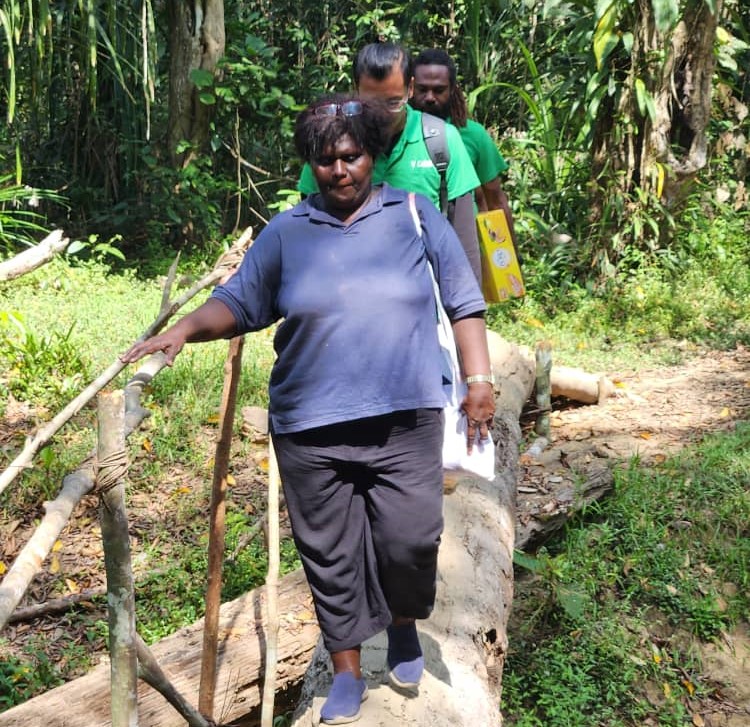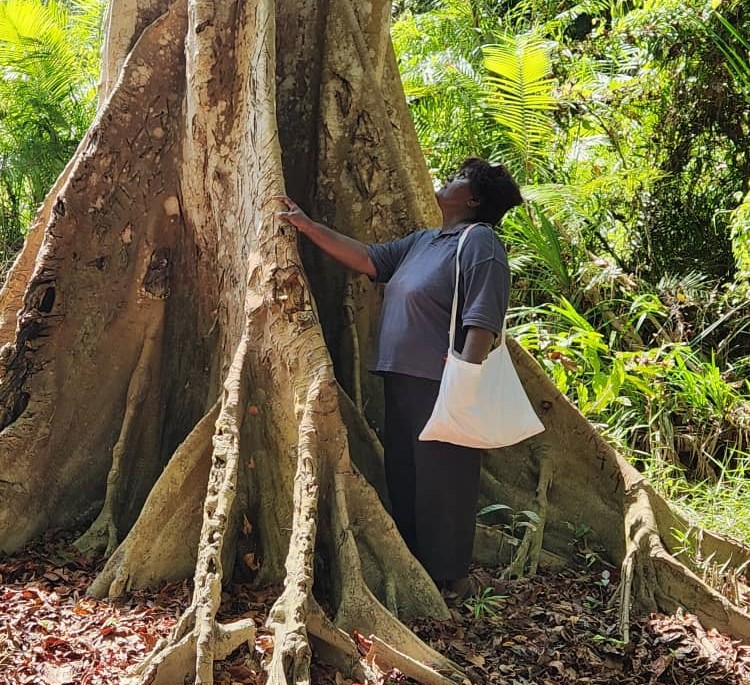Back in 1980 when she was only 10 years old, Gwen Sissiou gathered around a TV set with family to watch a black and white video of a frightened cockatoo fleeing forest destruction caused by a large copper mine development near her home in Papua New Guinea.
The footage of bulldozers clearing forests and the escaping bird stayed with Sissiou, acting as a catalyst for her journey towards becoming one of the many trailblazing women tackling deforestation and climate change in the Pacific island nation.
“My father used to work at the copper mine on Bougainville Island and he came home with a VHS video,” said Sissiou, the acting director for the REDD+ and Mitigation and a general manager at Papua New Guinea’s office of Climate Change and Development Authority (CCDA)
“A cockatoo flew away and then a guide talked about how he was losing his home. That stuck with me for a really long time,” she added.
Papua New Guinea is home to 7 percent of the world’s biodiversity and the third-largest rainforest, according to the Food and Agriculture Organization of the United Nations (FAO) - known for its rich variety of animals and bird species.
Rainforests cover 28 million hectares of the country but about 2.9 million hectares of forests are degraded, with a loss rate of 1.4 percent per year. Therefore, protection of these forests is vital for the world to meet its Paris Agreement climate goals.
Taking the lead, the country has been at the forefront of REDD+ talks globally since 2005 when it teamed up with Costa Rica to introduce the concept of reducing emissions from deforestation to the 33rd UN Framework Convention on Climate Change Conference (UNFCCC).
Over time, the government of Papua New Guinea has worked to lead international discussions on REDD+ while building capacity and testing approaches to REDD+ through international partnerships and alliances, as part of a broader approach to climate change.

In recent years, the country has seen a huge injection of development partner support for reducing emissions from deforestation and forest degradation – boosting awareness and driven through national and local government, private sector and communities, Sissou said.
She added that she estimates results-based payments from the Green Climate Fund to begin within two years along with other finance opportunities such as the LEAF Coalition.
Sissiouhas been a key leader in Papua New Guinea’s climate and forest conservation push, highlighting the importance of involving Indigenous Peoples and women in the process.
“Land and the forests are centric to life in the village because that’s where people source food, building materials, cultural things, medicines – all kinds of things,” she said.
“They own the land and know there is an intrinsic tie to the land they live on,” she added.
Changing attitudes towards women aid climate push
Current threats to Papua New Guinea’s lush forests include mining, logging, urbanization and agriculture expansion, said Sissiou, who is based in the capital Port Moresby and regularly drives to a nearby national park or returns to her home on Bougainville Island to be closer to nature.
Sissiou’s key role paving the way for more women to work in conservation and tackling deforestation in Papua New Guinea is even more remarkable in a country that ranked 169 out of 170 countries in the 2021 UNDP Gender Inequality Index, and where rates of gender-based violence remain stubbornly among the world’s highest, affecting about two in every three women.
Early in her career, Sissiou said as a woman it was often difficult to win the respect of men involved in Papua New Guinea’s forestry sector, and her work with REDD+ was rarely taken seriously as improving the economy as deemed more important.
Carbon trading was also largely viewed as a hoax or a cultist agenda, she added.
“But it has changed along the way,” said Sissiou, who is from a matrilineal society that she cited as helping shape her determination to succeed in the climate field.
“There is now a sense of respect that REDD+ is really something that can answer the local community’s need to balance livelihoods with preserving the forests.”

Presently, there are many women who have followed Sissiou’s path to work and lead climate action and forest conservation in Papua New Guinea – including about half of the people working at the country’s office of climate change and development authority (CCDA).
In Sissiou’s division alone, there are currently 15 staff members, of which eight are women.
“Women are driving this and making huge impact in promoting conservation and getting it done with real benefits for the people,” she said, adding that they benefit from traditionally being better managers of families and livelihoods in Papua New Guinea.
Sissiou grew up on Bougainville Island, a South Pacific archipelago which has a population of about 300,000 people and has a giant copper and gold mine, Panguna, which opened in 1969. The mine ceased operations in 1989 during a decade-long civil war and is now the subject of a lawsuit over historical environmental and social damage.
While many men often do most of the farming in Papua New Guinea, the food market stalls and small and midsize enterprises are usually run by women - highlighting the positive societal changes that are happening, she said.
“Women become marginalised because of the social and cultural norms around our traditional roles in the house and village, and limited to only household work ,” Sissiou added.
Photo credits: Gwen Sissiou




